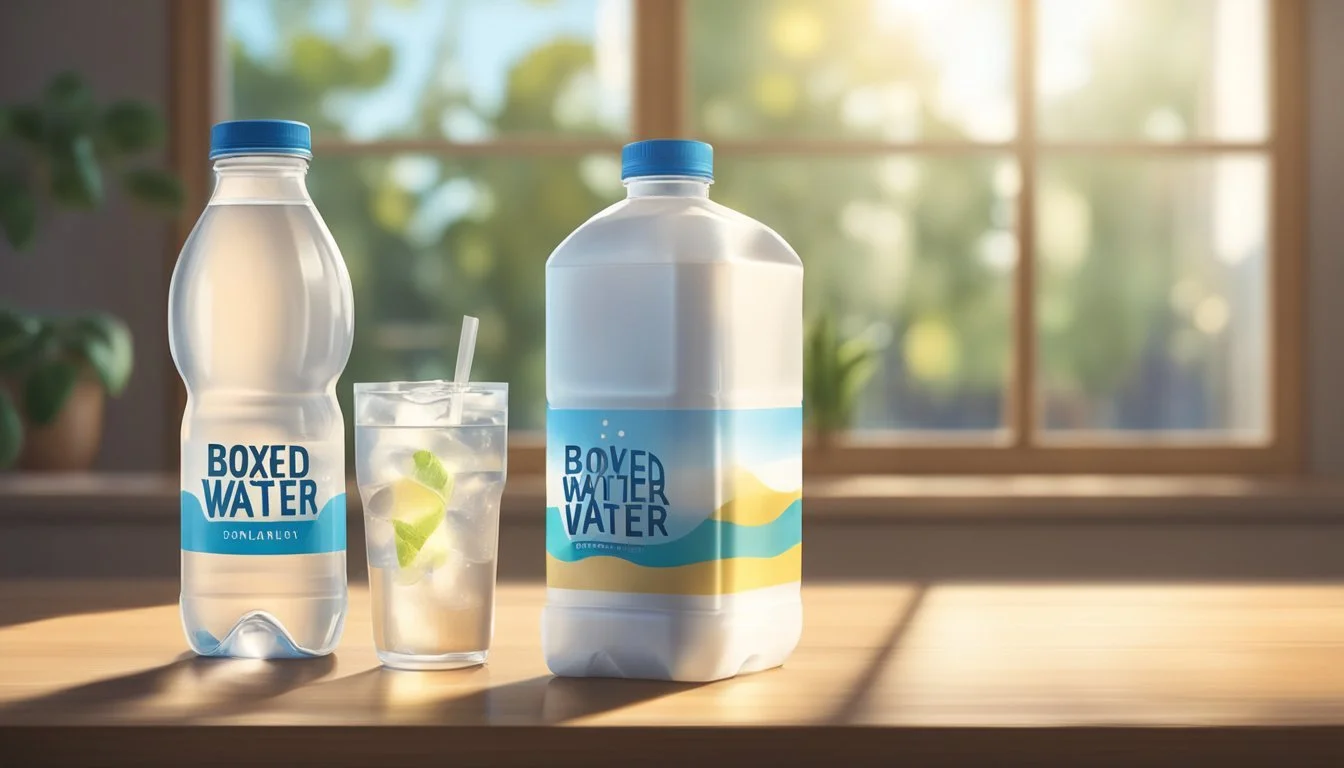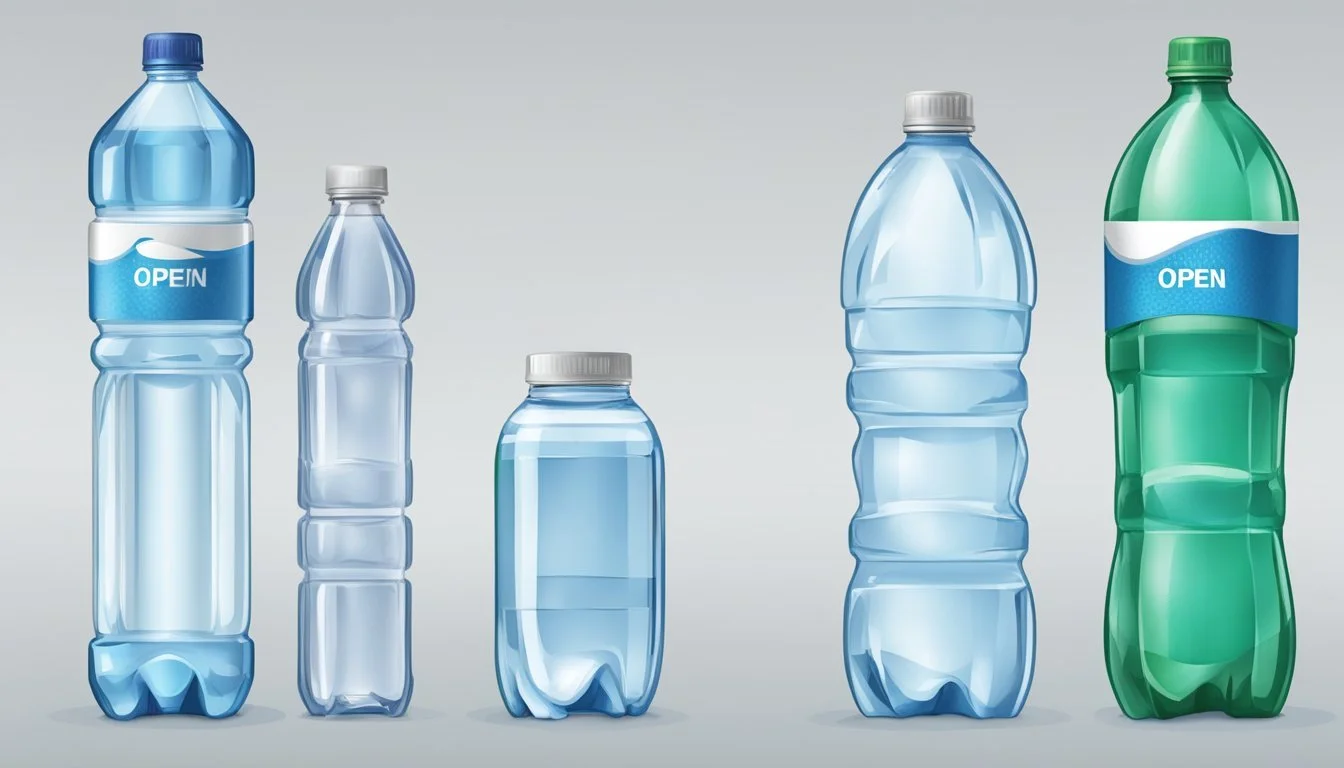Boxed Water vs. Open Water
Analyzing the Best Bottled Option
Consumers are increasingly seeking sustainable options in their daily lives, and choosing between boxed water and traditional bottled water has become part of this environmentally conscious shift. Boxed Water, launched in 2009, touts its eco-friendliness with packaging made primarily from renewable paper sources. It aims to reduce the environmental footprint associated with plastic bottles.
In contrast, conventional bottled water, often encased in plastic, poses significant sustainability challenges. Although some plastic bottles are recyclable, the reality is that many still end up in landfills and oceans. Choosing boxed water can significantly decrease the environmental impact associated with traditional bottled water.
Boxed Water isn't just about the packaging. The water inside undergoes a purification process involving ultraviolet, carbon, and reverse-osmosis filtration, ensuring safety and quality. With the aim of rethinking hydration habits, understanding these differences can inform a more eco-friendly choice in everyday life.
Understanding Boxed and Bottled Water
Boxed Water focuses on sustainability with recyclable cartons, while traditional bottled water predominantly uses plastic. Each has unique properties related to packaging, environmental impact, and consumption practicality.
The Basics of Boxed Water
Boxed Water is packaged in cartons primarily made from paper, aluminum, and plastic film. These cartons are 92% plant-based, offering a more sustainable alternative to traditional plastic bottles. The paper component, derived from sustainably managed forests, forms 74% of the carton.
Additionally, Boxed Water claims a lower carbon footprint due to lighter transportation weight and reduced reliance on fossil fuels. These cartons are designed to be recyclable, contributing less to landfill waste compared to plastic bottles. Convenience factors include ease of storage and transport.
Overview of Traditional Bottled Water
Traditional bottled water is mainly packaged in plastic bottles made from polyethylene terephthalate (PET). This material is lightweight, durable, and cost-effective. However, plastic production involves significant fossil fuel consumption, contributing to environmental concerns such as global warming and pollution.
Plastic bottles are easily recyclable, yet high rates of improper disposal lead to substantial landfill and ocean pollution. A key advantage of plastic bottles is their durability, as they can withstand various conditions, making them highly practical for on-the-go consumption. They are available in a wide range of sizes and brands, offering consumers extensive choices.
Overall, while traditional bottled water provides practicality and variety, boxed water emphasizes environmental benefits through its sustainable packaging.
Environmental Considerations
Boxed Water and Open Water have distinct environmental attributes. The primary focus will be on the impact of plastic bottles, the sustainability of Boxed Water packaging, and the recycling and waste management processes for both types of packaging.
The Impact of Plastic Bottles on the Environment
Plastic bottles, commonly used for Open Water, are often made from single-use plastics. These bottles contribute significantly to environmental pollution. Only a small percentage is recycled, while the rest end up in landfills or oceans. The degradation process of plastics can take hundreds of years, leading to long-term contamination. Marine life is particularly affected by plastic waste, often mistaking it for food, leading to fatalities. The production process of plastic bottles also has a considerable carbon footprint, contributing to greenhouse gas emissions.
Sustainability of Boxed Water Packaging
Boxed Water's packaging is primarily composed of sustainable paper, with some aluminum and plastic film to ensure durability and water resistance. The paper used often comes from FSC-certified forests. This means the trees are sourced from responsibly managed forests that provide environmental benefits. Paper-based cartons are known to be more sustainable due to their renewable nature and lower carbon footprint compared to plastic. The production of these cartons results in fewer greenhouse gas emissions, benefiting the environment.
Recycling and Waste Management
Recycling processes for plastic bottles and boxed water cartons differ significantly. Plastic bottles can often be recycled, but the rate is low due to contamination and improper sorting. On the other hand, carton recycling is more efficient when proper facilities are available. Paper-based cartons are easier to recycle than single-use plastic bottles, as long as they are disposed of correctly. Some regions lack facilities for carton recycling, which could pose a challenge. Effective waste management practices are essential to maximize recycling rates for both packaging types and minimize their environmental impact.
Health and Safety Standards
When choosing between Boxed Water and Open Water, it is crucial to consider the health and safety standards governing their production. These standards ensure the purity and safety of the water consumed and the materials used in packaging.
Quality and Purity of Drinking Water
The quality and purity of drinking water play a significant role in consumer health. Boxed Water and Open Water both go through rigorous purification processes to eliminate impurities. Boxed Water utilizes ultraviolet light, carbon filtration, and reverse osmosis to remove contaminants like chlorine.
Open Water similarly employs advanced filtration techniques to ensure cleanliness. The elimination of microplastics and heavy metals such as lead and mercury is essential. Both brands meet FDA standards, ensuring the water is safe for most healthy individuals.
Safety and Materials: From Plastic to Paper
Packaging materials are another critical factor in assessing health and safety. Boxed Water is packaged in recyclable cartons comprising 74% paper, with added aluminum and plastic film for waterproofing. This design reduces reliance on traditional plastic bottles, which often contain BPA.
Open Water uses aluminum bottles, which are also BPA-free and fully recyclable. The shift to aluminum reduces plastic waste and potential health risks associated with plastic leaching. Both packaging types prioritize sustainability and consumer safety by adhering to stringent manufacturing practices.
By understanding the health and safety standards of these bottled waters, consumers can make more informed choices about what they drink and the environmental impact left behind.
Economic and Production Insights
This part examines the financial dynamics and production methods behind Boxed Water and Open Water, focusing on cost efficiency and materials used.
Production Costs and Consumer Prices
Boxed Water and Open Water differ in production costs due to the materials and processes involved. Boxed Water uses a blend of 74% paper, 1% aluminum, and 25% plastic film. Open Water primarily uses recyclable aluminum, which can be more costly initially.
The plant-based plastic used in Boxed Water's packaging aims to reduce reliance on oil-based products, potentially lowering long-term costs. Consumers may notice that Boxed Water is often priced comparably or slightly higher than standard bottled water. Open Water's pricing reflects the premium nature of its aluminum use but strives for competitive market positioning.
Manufacturing Processes of Water Containers
Boxed Water's manufacturing process involves multiple layers of materials to optimize sustainability and functionality. The outer layer is primarily paper, offering a renewable resource. Inside, a thin aluminum layer provides a barrier, while a plastic film ensures the package remains waterproof.
Open Water's process focuses on creating lightweight, durable aluminum bottles. Aluminum's recycling capability is a significant advantage, as it can be recycled indefinitely without loss of quality. This process may involve higher initial energy use, but the long-term environmental benefits can outweigh these costs.
These differing approaches reflect each company's commitment to reducing environmental impact while delivering a safe, sustainable product.
Social and Global Implications
Boxed Water and Open Water both claim to contribute positively to the environment and society, but their approaches and impacts differ significantly.
Corporate Social Responsibility
Boxed Water promotes its use of sustainable forests and renewable content. Its cartons are made mainly from paper, which is a renewable resource. Specifically, Boxed Water cartons contain 74% paper, 1% aluminum, and 25% plastic. This composition aims to reduce the environmental footprint compared to traditional plastic bottles. Boxed Water also supports reforestation projects, linking its business model to broader environmental change.
Open Water, on the other hand, markets itself with aluminum packaging, emphasizing its fully recyclable nature. This method aims to minimize waste and promote the circular economy. Open Water is also committed to carbon neutrality and offsets its emissions through various initiatives.
Environmental groups criticize both firms for potential greenwashing, questioning the true extent of their sustainable practices. Despite these criticisms, individuals are increasingly attracted to these brands due to their commitment to lowering global impact. Their efforts showcase a significant shift towards environmentally and socially responsible business models, potentially influencing other companies to follow suit.
Consumer Experience and Accessibility
Consumers often weigh taste and convenience when choosing between various water packaging options, with availability and market presence also playing key roles.
Taste and Convenience of Boxed vs. Bottled Water
Taste is a crucial factor for water consumers. Many find that bottled waters like Ice Mountain have a pure, crisp taste. In contrast, Boxed Water is noted for its clean, neutral flavor, often attributed to its paper-based packaging.
Convenience is another significant consideration. Traditional bottled water is familiar and widely available, often easier to transport due to its lightweight plastic bottles. Boxed water, although eco-friendly, might be less portable due to its structure, but advocates claim it feels more durable in hand.
Availability and Market Presence
Boxed Water and bottled brands like Ice Mountain differ in their market presence. Bottled brands are ubiquitous, found in virtually every store and vending machine. They have established distribution networks, ensuring consistent availability.
Boxed Water, while growing in popularity, is still less common. Its eco-friendly appeal targets niche markets, primarily in urban areas and eco-conscious communities. Despite its limited reach, its unique branding and sustainability claims are slowly garnering a loyal consumer base.
Innovation in Water Packaging
Recent innovations in water packaging have introduced more sustainable options and alternatives to traditional plastic bottles. Companies are exploring various materials and designs to reduce environmental impact and promote sustainability.
Advancements in Sustainable Water Containers
One significant development is the shift towards 92% plant-based cartons. These cartons, primarily made from renewable materials, reduce reliance on fossil fuels. Companies like Boxed Water have pioneered this approach, using cartons that feature a plant-based cap.
In addition to plant-based cartons, other sustainable options include reusable water bottles. Materials like stainless steel, aluminum, and glass are gaining popularity due to their durability and recyclability. Stainless steel bottles, for example, are rust-resistant and long-lasting, making them a practical choice for everyday use.
The environmental benefits of sustainable containers are clear. They help lower carbon footprints and decrease the volume of single-use plastics in landfills and oceans.
Alternative Solutions to Plastic Bottles
Aside from plant-based cartons, another innovative solution is canned water. Aluminum cans are infinitely recyclable and have a high recycling rate compared to plastic. This makes them a compelling option for reducing waste.
Another alternative is glass bottles. While heavier and less convenient for transport, glass is recyclable and does not leach chemicals into the water. This makes it a safe and clean option for water packaging.
Additionally, some companies are developing hybrid solutions, such as partially plant-based plastic bottles. These utilize both renewable materials and traditional plastics to minimize the overall environmental impact.
By exploring these innovations, the water packaging industry progresses towards a more sustainable future. Each option offers unique advantages, contributing to the broader goal of reducing dependence on single-use plastics.






